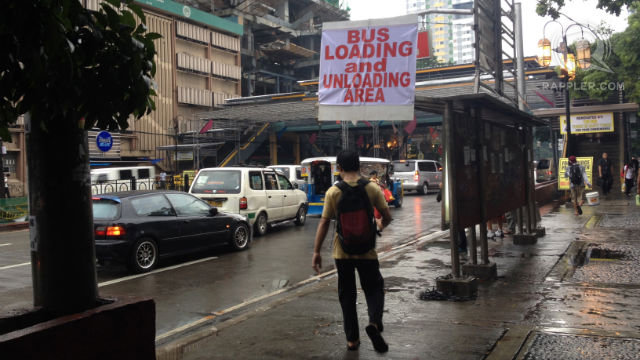SUMMARY
This is AI generated summarization, which may have errors. For context, always refer to the full article.

MANILA, Philippines – It’s a Manila miracle.
At 6 am Monday, July 29, traffic along España Boulevard infront of the University of Santo Tomas (UST) was light. Private vehicles, jeeps, and FX services passed freely through the normally congested road.
Manila Vice Mayor Isko Moreno said it’s a miracle made possible by the new city government’s political will.
“Political will lang naman ito. Kailangan lang dito dala mo ang bayag mo,” he told Rappler.
(All it takes is political will. You need to have the balls to do it.)
Monday is the first day of a “modified” bus ban in the Philippine capital, a week after the city of Manila imposed a ban on city and provincial buses without terminals in the city.
The modified system now allows buses without terminals to pass through Manila’s streets, provided they load and unload passengers only in designated bus stops. Only 10 units per bus franchise will be allowed to enter the city.
Despite the change, however, buses were nowhere to be seen along Manila’s major streets. Along Espana, for instance, there were no buses when Moreno made his morning rounds.
No buckling
Lobbyists can try, but there’s no stopping the bus ban.
One week into its implementation, Moreno said lobbyists for bus companies were already attempting to influence city hall.
“[We have a] ‘no take’ policy – No compromise. Pag hindi ka humawak sa kawali, hindi ka mauulingan, hindi ka macocompromise,” he said.
(If you distance yourself from lobbyists, you won’t be compromised.)
Buses are still allowed in the city, provided that they have a terminal there — their own, public, or private. The city government wants to regulate and determine if the buses going through Manila really do have franchises registered with the Land Transportation and Franchising Regulatory Board (LTFRB), said Moreno.
The system will also allow the government to regulate the entrance and exit of buses in the city.
“Kahit sino pa pinapayagan, hindi pa rin sila pwedeng sabay-sabay,” he added.
(No mater which buses are allowed to enter Manila, they still won’t be out in the streets at the same time.)
Earlier he defended the city’s bus ban after LTFRB executive director Roberto Cabrera III said it was illegal.
Solving the traffic problem
Prior to the bus ban, an estimated 1000 buses traverse the city 3-4 times a day. With the ban, only 166 buses with terminals in the city are allowed to pass through.
The move disrupted the routes of many commuters, taking them by surprise. The modifications were due to the complaints from commuters, especially students, said Moreno. “We try to be sensitive enough,” he added.
Still, he is determined in implementing the ban, saying Manila residents benefit the most from it.
“Magkakatraffic at magkakatraffic… pero lalo na kung may mga bus. Traffic is now at a more manageable level,” he said.
(You can’t eradicate heavy traffic. But it’s worse when buses are around.) -Rappler.com
Add a comment
How does this make you feel?
There are no comments yet. Add your comment to start the conversation.